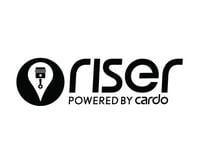The Yamaha wants to be as stable as possible. That how you ride it, with minimal input. You try to creep around the motorcycle, so it does the work rather than the rider.
I have never ridden a Honda, but I imagine it has a really wide support system like a pyramid. You can grab a load of front brake and it has a massive base that you can squeeze against all the way to the top.
With the Yamaha, the base is a lot narrower, so when you squeeze against it, there is more chance of it toppling over like a tower.
If you look after the bike nicely, it does exactly what it needs to do. If you push past its swaying point, it topples over and you either overload the front tire and crash or turn the bike into knots and go straight.
The Honda is shorter, so it's more nervous mid-corner. Your safest bet is to point it into the middle of the corner, spend minimal time at maximum lean, and use its strengths, which are braking and acceleration.
If Yamaha tried to design a bike to ride like a Honda, I think they would go two or three seconds slower. If Honda tried to design a motorcycle to ride like a Honda, they would do the same.
I am still struggling with the Michelin front. It bugs me that we haven't found a solution. Right now, I have to ride a Yamaha stop and go, and I'm not fast enough.
I have a lot of problems making the tire work, getting confidence with the compound that we are using, and extracting it in the right way so I can use Yamaha's strength, which is corner speed.
Right now, Michelin is managing Ducati's problem rather than making Ducati manage its own problem. That means all the other manufacturers are suffering, especially Yamaha.
We have a fundamental issue. It's no longer the nuts and bolts of the setting. Before, because we knew the bike and tires, we were making refinements—the final one percent. Now, it's probably 15 to 20 percent.
Right now, we're trying what worked in the past with a different tire manufacturer. We need to think outside that box and go back to what we have learned from the sport over the last 30 years and re-apply that to these new systems.
We continue to work on the electronics. We have fewer parameters now. Imagine trying to start a 260-horsepower machine wide open by just letting the clutch go like we did before.
The old software was a gradual progression of the last eight to 10 years of development. Right now, we're really only in the eighth or 10th week of development.
We bring a lot of tried and failed ideas to COTA. I hope that with all the things we've been learning, at some point, we're going to find something that works.










/cloudfront-us-east-1.images.arcpublishing.com/octane/32JQDB22JE6GGO6FEEKJWVX66U.jpg)
/cloudfront-us-east-1.images.arcpublishing.com/octane/AUE3NFVRRZDSBIDVUGIYIDQNUI.jpg)
/cloudfront-us-east-1.images.arcpublishing.com/octane/LYR62CH2WNBMHJJVXVATZHOUE4.jpg)
/cloudfront-us-east-1.images.arcpublishing.com/octane/RBCTRGBQYBDK7A6XPG3HKPS7ZQ.jpg)
/cloudfront-us-east-1.images.arcpublishing.com/octane/MQXQRYMZVBCWJIRYP3HEN3SHVE.jpg)
/cloudfront-us-east-1.images.arcpublishing.com/octane/TSPODNNEWRDSVJGUCNQTDG4ADI.jpg)
/cloudfront-us-east-1.images.arcpublishing.com/octane/X5TB7BDV4BA2RPSY54ZGK27RP4.jpg)
/cloudfront-us-east-1.images.arcpublishing.com/octane/REUHOJXRDBGZ5IHBYZCCBCISPA.jpg)
/cloudfront-us-east-1.images.arcpublishing.com/octane/52LGJTCKBFEHDF7S7H4CVUIMGM.jpg)
/cloudfront-us-east-1.images.arcpublishing.com/octane/YMWAIPIPSJAOXOU3QMJMGH37OM.jpg)


/cloudfront-us-east-1.images.arcpublishing.com/octane/EJ6KZRGAYBCVXNL2PJXL37UVWQ.jpg)
/cloudfront-us-east-1.images.arcpublishing.com/octane/AAN4TI76M5H5JMUVEIGASWXBDU.jpg)
/cloudfront-us-east-1.images.arcpublishing.com/octane/P3RXD2UCPFF37CMB7CHPVKXORY.jpg)
/cloudfront-us-east-1.images.arcpublishing.com/octane/VZEG2EJI2RDFZNHLRZMU56MD3Q.jpg)
/cloudfront-us-east-1.images.arcpublishing.com/octane/GVJQO5FFOFBWNGODOBRB4FBAW4.jpg)
/cloudfront-us-east-1.images.arcpublishing.com/octane/BIVAK2SFIBDJJM25E7I5VU2FJE.jpg)
/cloudfront-us-east-1.images.arcpublishing.com/octane/CH5VX52UG5CFHOVH5A6UYEFWWA.jpg)
/cloudfront-us-east-1.images.arcpublishing.com/octane/ZVGJNGZRU5C33N7KN23BBFKSC4.jpg)


/cloudfront-us-east-1.images.arcpublishing.com/octane/CZ5OM3E43ZEXJHY7LCYXCHLIKI.jpg)
/cloudfront-us-east-1.images.arcpublishing.com/octane/DF5T4K5KPZFJXFCTGPYR77PKJM.jpg)
/cloudfront-us-east-1.images.arcpublishing.com/octane/RMCT2KVQBJHBZMRTSLOVPMOILU.jpg)